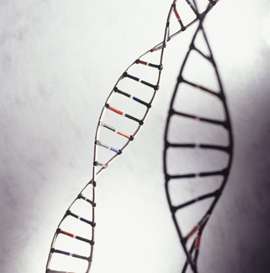Researchers discover a genetic mutation that prevents diabetes complications

A number of complications are associated with diabetes, but they are more prevalent in some patients than in others. A Finnish study has now revealed two genetic mutations which seem to lower the risk of contracting a diabetic retinal or kidney disease.
The most significant complications of diabetes include diabetic retinal disease, or retinopathy, and diabetic kidney disease, or nephropathy. Both involve damaged capillaries.
The biggest risk factor associated with damage to the tiny blood vessels is high blood sugar, although genetic factors are also at play. Experiments conducted on both individual cells and laboratory animals indicate that the presence of vitamin B1 inside the cell can prevent the damage caused by high blood sugar.
Together with Professor Massimo Porta from the University of Turin, Professor Per-Henrik Groop, Principal Investigator of the FinnDiane research project at the University of Helsinki and Folkhälsan Research Centre, and his research group have studied the impact of point mutations on the genes that encode the proteins which transfer vitamin B1 into cells. The research was based on the hypothesis that the studied mutations impact the individual's capacity to transfer vitamin B1 into cells and consequently the susceptibility for additional complications associated with diabetes.
The research used the world's most extensive research data set of type 1 diabetes patients, compiled by Groop's group, in which the patients are characterised based on their genetic profile and the severity of their diabetes complications.
The results showed that two of the studied point mutations in the SLC19A3 gene were strongly associated with both retinopathy and the combination of retinopathy and nephropathy; thus, carriers of the genetic variant were less likely to have these complications. The protective effect of the variant remained significant even when other common risk factors were taken into account.
The study was repeated on North American patient data, and the results confirmed that the two variants protect their carriers from the combination of retinopathy and nephropathy.
"Based on these results, it seems that the SLC19A3 gene has a role in the development of diabetic nephropathy and diabetic retinopathy. The results also help explain why some patients with type 1 diabetes are more likely to develop complications than others," says Iiro Toppila, the researcher responsible for analysing the data. "However, further research is needed into the biological effects of point mutations."
More information: Massimo Porta et al. Variation in and Protection from Microvascular Damage in Type 1 Diabetes, Diabetes (2015). DOI: 10.2337/db15-1247
















